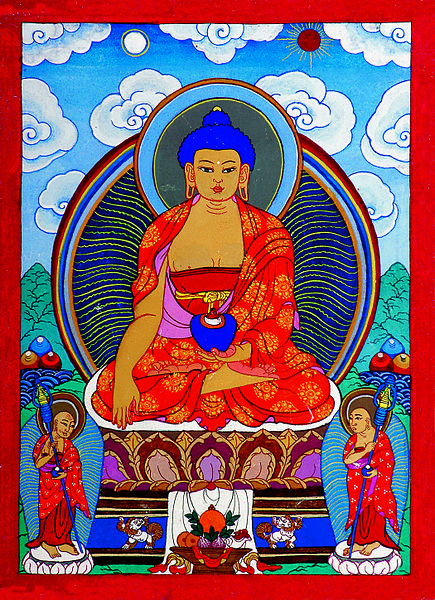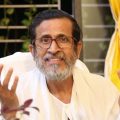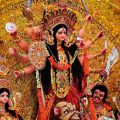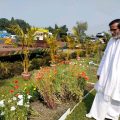Celebrating the Eternal Teachings of Guru Nanak Dev Ji
My connection with Guru Nanak Dev Ji goes back to my childhood. I was born in a Hindu family, and when I was a 6-7-year-old boy, I used to see my father going to a nearby Gurudwara in Panipat. My father had a very strange job. The high priest of the Gurudwara, who was a very saintly man, known as Guruji, had given him a strange job for the morning and the evening. Every day, he was to go and fetch chapatis collecting from the various houses of the faithful people. He would bring the basketful of chapatis and out of which he was given 4-5 chapatis, which I and my father shared during our lunch. Once in while I would accompany my father to deliver basketful of chapatis to the house of this Guruji, and often I would see him sitting in meditation. I could see that his face was radiant with love and compassion when he was sitting in meditation. This left an indelible impression on my psyche. Happy Ho organizes best Meditation and Tarot classes in Noida and Delhi NCR area in India.
Afterward, I started going to some Gurudwaras, where I enjoyed listening to sabads and kirtans, and many times during the school exams days and the loud sound coming from Gurudwaras too early in the morning, I used to get very irritated, as it disturbed my studies–I was seriously into my studies. The more I got involved in my studies, the more I drifted away from the spiritual atmosphere. It was only in the year 1975 when I heard Osho’s discourses Ek Onkar Satnam, on Japuji of Guru Nanak Dev Ji, I understood the essential teaching of the Guru. Certainly, it requires another enlightened Sadguru like interpret the previous enlightened Sadgurus. The priestly talks are phony and business-like, but an enlightened person stands at the same height to describe the sunlit peaks of consciousness where enlighted people–such as Gautama the Buddha, Mahavira, Mystic Kabir, Meera, Gorakh, Nanak, Farid, and Osho reside.
Talking about Osho’s discourses on Japuji of Guru Nanak Dev, the eminent journalist and the author Khushwant Singh wrote: “OSHO is one of the greatest souls born in this country. “The Japuji was Nanak’s first proclamations after the union with the beloved. The Japuji are the very first words uttered by him after self – realization. Therefore they hold a very special place in the sayings of Nanak. They are the latest news brought back from the kingdom of heaven.”
For over 35 years, Osho spoke to international audiences of seekers, addressing their essential questions and concerns. The international press calls him “A 21st Century Prophet” and “an oracle of modern times.” Spoken with authority, clarity, sharpness, and humor, his insights address both the timeless and timely concerns that tend to escape our notice in the clamor and overload of daily life.
“Osho’s discourses on Nanak’s songs made me aware of many things which previously were not clear to me. I started listening every morning to his discourses in which he has explained the teachings of the Upanishads, Vedas and Sufi mystics. It confirmed my belief that Osho is one of the greatest souls born in this country…These discourses are not just for Sikhs but are useful for all those who want to move on the path of devotion.” Khushwant Singh.
There is a well-known story in the life Guru Nanak Dev, Osho mentions it in his own unique way–the story of the Guru going to Kaaba. Osho says: There was no need for Nanak to go to the Kaaba – he was not a Mohammedan. But he never considered himself as Hindu or confined to any religion. Millions of people go to the Kaaba, and Nanak thought it would be a good place to go, to see and meet millions of people. He went to the Kaaba. It was a long journey, and when they reached, it was getting dark, the sun had set, and they were so tired that he told his companion, Mardana…. That was a beautiful combination.
The disciple, Mardana, was a great musician, a genius, and Nanak would sing – his teachings are all songs – and Mardana would play on his instruments. And the company of two had become famous. Mardana was Mohammedan. The master was Hindu, the disciple was Mohammedan, but there was such a meeting between the two that nobody was a Hindu and nobody was a Mohammedan. Nanak told Mardana, “First we should rest tonight. Tomorrow we will start moving amongst the people.”
And as he was going to sleep, Mardana said, “Master, you are doing something wrong. You are lying with your feet towards the Kaaba. That is never done.” Nanak said, “But do you think Nanak comes every day to the Kaaba? That too is never done, will never be done again. So don’t be worried, just follow what I am doing.”
Poor Mardana, he was a Mohammedan, he knew that this was absolutely wrong, but if the master was doing it…. He also slept putting his feet towards the Kaaba, just outside the Kaaba temple. Somebody saw them, informed the high priest, and the high priest came with guards. They woke up Nanak and Mardana and told Nanak, “We had heard that you are a holy man. What kind of holy man are you? You don’t understand a simple thing – that the Kaaba is the holiest place in the world – and you are lying with your feet towards the Kaaba.”
Nanak said, “I was told by Mardana – he is my disciple – that it is the holiest place. But my difficulty is, wherever I put my feet I find the place holiest. It is not the place, it is my feet which makes every place so holy. And if you are skeptical, you can try; you can turn my feet wherever you want.”
Osho adds: Up to this point I see that this is history; beyond this, it is a metaphor – but significant, meaningful, completing what history cannot complete. The priest turned Nanak’s feet in every direction, and they were amazed that the Kaaba turned to exactly where Nanak’s feet were turned. They went all around turning him, and Mardana could not believe it. Nanak was laughing and saying, “Do your best, don’t leave out any place – because this is my problem: where should I keep my feet? Every place is holy, the whole existence is divine.”
The Mohammedan priest touched the feet of Nanak and said, “Please forgive me. People have come here, but none was like you. We have never seen the Kaaba moving wherever someone’s feet are moved.”
In her introduction to Osho’s discourses on Guru Nanak’s Japuji Sahib, renowned Punjabi poetess wrote, “Ek Omkar Satnam, the sound of Om alone is the true name. Osho’s voice leads us into the difference between reality and truth. Where science seeks truth through the medium of mind alone and a poet seeks through the medium of the heart, and the mind and the heart both fall short, Osho becomes a pointer to that inner experience of Nanak where the two meet and merge, where the duality of science and art is lost and we enter the Omkar.
”When Osho’s voice rustles in one’s interior like a soft breeze, when overburdened like a rain cloud it showers drop by drop, and when it descends into one’s being like a ray of the sun, I can say on my own authority that the dormant seed of consciousness starts sprouting. Then the flower of countless colours that blooms can have any name to it. It blooms also as a Gautam Buddha, it blooms also as a Mahavira, it blooms also as a Nanak.”
Her statements about Osho showed her deep the dimension of spirituality, for example, “Where the dance of Meera and the silence of Buddha meet, blossoms the true philosophy of Osho.” Amrita Pritam regarded
It is about time that the sincere people around the world should read Osho.s commentaries on Guru Nanak Dev ji..Ek Onkar Satnam and the English title is The True Name.https://www.satnam.de/en/osho-the-true-name-discourses-on-jap-ji-sahib.html It is available in India also, and is not so costly..https://www.sapnaonline.com/books/true-osho-8176212075-9788176212076
And still better, if you get Osho’s 20 audios on this topic available on oshoworld.com. You will feel transported to rarefied heights of superconsciousness, attained by Guru Nanak Dev Ji. Happy Prakash Parv to you all





